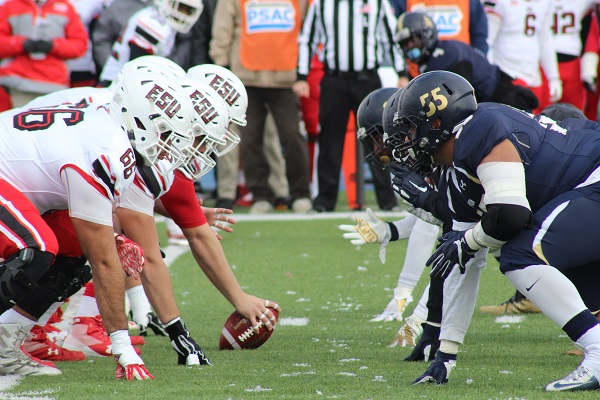Scholarship details
NCAA scholarships are designed to support student-athletes in their pursuit of higher education while participating in intercollegiate sports. These scholarships provide financial assistance to help cover the costs of attending college, including tuition, fees, room and board, and sometimes textbooks and other educational expenses.
Here are some key points about NCAA scholarships:
- Division Levels: The NCAA is divided into three main divisions: Division I, Division II, and Division III. Each division has its own rules and regulations regarding scholarships.
- Division I Scholarships: Division I schools, which include large universities with prominent athletic programs, often offer the most comprehensive athletic scholarships. These scholarships can be full or partial, covering various expenses related to attending college.
- Division II Scholarships: Division II schools also offer athletic scholarships, but they may not be as extensive as those in Division I. However, Division II scholarships can still cover a significant portion of a student-athlete’s educational expenses.
- Division III Scholarships: Division III schools do not offer athletic scholarships based on athletic ability. However, student-athletes in Division III can still receive academic scholarships, need-based financial aid, and other forms of institutional aid.
- Recruiting Process: The process of obtaining NCAA scholarships typically involves student-athletes actively engaging in the recruiting process. This includes contacting college coaches, showcasing athletic skills and achievements, participating in recruitment events, and maintaining communication with coaches throughout the process.
What are the Eligibility Requirements for the NCAA Scholarships:
The eligibility requirements for NCAA scholarships vary depending on the division level (Division I, II, or III) and the specific sport. However, here are some general guidelines for NCAA scholarships:
- Academic Eligibility: To be eligible for NCAA scholarships, student-athletes must meet certain academic requirements. These requirements typically include a minimum GPA (grade point average) and completion of specific high school core courses. The NCAA has established eligibility standards known as the “Initial Eligibility Clearinghouse,” which outlines the academic criteria for student-athletes.
- Amateurism: NCAA scholarships are available for amateur athletes. It means that athletes must not have received payment or compensation for their athletic abilities beyond specific allowable expenses. Maintaining amateur status is crucial for eligibility.
- Athletic Performance: NCAA scholarships are awarded to student-athletes who excel in their sport. Coaches and recruiters typically evaluate athletic performance, including skills, achievements, and potential, when considering scholarship candidates. Demonstrated excellence and commitment to the sport are essential factors.
- Recruiting Process: Student-athletes interested in NCAA scholarships should be proactive in the recruiting process. This may involve contacting college coaches, participating in athletic showcases, attending recruitment events, and providing relevant athletic performance records, such as highlight videos and stats.
What is the total award for the NCAA Scholarships:
The total award for NCAA scholarships can vary depending on various factors, including the division level (Division I, II, or III), the specific sport, and the individual college or university. It’s important to understand that NCAA scholarships are not guaranteed full-ride scholarships. Here are some key points to consider regarding the total award amount:
- Division I and Division II scholarships: These divisions can offer full or partial scholarships to student-athletes. Full scholarships cover tuition, fees, room, board, and course-related books. Partial scholarships may cover only a portion of these expenses. The total award amount can vary based on the school’s resources, the sport’s popularity, and the individual athlete’s performance and recruitment negotiations.
- Division III scholarships: Division III schools do not offer athletic scholarships based on athletic ability. However, they may provide academic scholarships, need-based financial aid, and other forms of institutional aid to student-athletes. The total award amount in Division III will primarily depend on academic qualifications and financial need.
- Stacking of scholarships: It’s important to note that NCAA regulations govern the stacking of scholarships. This means that in some cases, student-athletes may be eligible to receive additional academic scholarships, grants, or other forms of financial aid in addition to their athletic scholarships. However, the specific rules regarding scholarship stacking vary by division and school, so it’s important to consult with the college’s financial aid office to understand how scholarships will be applied.
- Cost of Attendance: The total award for NCAA scholarships is typically based on the “cost of attendance” at the college or university. This includes tuition, fees, room, board, books, supplies, and other related expenses. The specific cost of attendance can vary significantly from one institution to another, impacting the total award amount.

How do you apply for the NCAA Scholarships:
To apply for NCAA scholarships, student-athletes need to follow these general steps:
- Register with the NCAA Eligibility Center: The NCAA Eligibility Center is responsible for certifying the academic and amateur eligibility of prospective student-athletes. You need to create an account on the NCAA Eligibility Center’s website and complete the registration process. This typically involves providing personal information, academic history, and relevant sports participation details.
- Meet Academic Eligibility Requirements: Ensure that you meet the academic eligibility requirements set by the NCAA. This includes completing the required number of core courses, achieving a minimum GPA, and meeting standardized test score thresholds (such as the SAT or ACT). The NCAA Eligibility Center will evaluate your academic records to determine your eligibility.
- Create an Online Profile: Build an online profile on the NCAA Eligibility Center’s website. This profile should include your academic achievements, athletic performance, sports highlights, coach recommendations, and other relevant information. It serves as a platform to showcase your abilities and attract the attention of college coaches and recruiters.
- Communicate with College Coaches: Reach out to college coaches at institutions you are interested in attending. Send them your profile, highlight videos, and any other supporting materials. Maintain regular communication with coaches to express your interest, update them on your progress, and gather information about scholarship opportunities at their respective schools.
- Participate in the Recruiting Process: Engage in the recruiting process, which may involve attending recruitment events, campus visits, and athletic showcases. Take advantage of opportunities to interact with college coaches and demonstrate your skills and abilities in your chosen sport. Coaches may evaluate your performance and consider you for potential scholarship offers.
- Submit the Free Application for Federal Student Aid (FAFSA): In addition to athletic scholarships, many student-athletes also qualify for need-based financial aid. Complete the Free Application for Federal Student Aid (FAFSA) to determine your eligibility for federal grants, loans, and work-study programs. This step is important for accessing various types of financial assistance.
Step by Step Student Visa Process for France
Here is a general step-by-step guide to help you understand the process:
Step 1: Receive an Acceptance Letter: Obtain acceptance from a U.S. educational institution that is authorized to issue the Form I-20 (for F visa) or Form DS-2019 (for J visa). You must apply and be admitted to an approved school before proceeding with the visa application.
Step 2: Pay the SEVIS Fee: The Student and Exchange Visitor Information System (SEVIS) fee must be paid before your visa interview. Visit the U.S. Immigration and Customs Enforcement (ICE) website to pay the SEVIS fee online and obtain the payment receipt.
Step 3: Complete the Online Visa Application: Complete the Online Nonimmigrant Visa Application (Form DS-160). Submit the application online and print the confirmation page, as you will need it for the visa interview.
Step 4: Schedule a Visa Interview: Contact the U.S. embassy or consulate in your home country to schedule a visa interview appointment. The wait times for appointments can vary, so it’s advisable to schedule your appointment well in advance.
Step 5: Gather Required Documents: Prepare the necessary documents for your visa interview. Commonly required documents include:
- Passport: Valid for at least six months beyond your intended period of stay in the United States.
- Form I-20 or DS-2019: The document issued by your educational institution.
- SEVIS Fee Payment Receipt: Proof of payment of the SEVIS fee.
- Confirmation Page: The printed confirmation page of your completed DS-160 application.
- Financial Documents: Evidence of financial resources to cover your educational and living expenses in the United States, such as bank statements, scholarship letters, or sponsor letters.
- Academic Documents: Transcripts, diplomas, standardized test scores (if applicable), and any other relevant educational documents.
- Passport-sized Photos: Generally, two identical, recent color photographs.
Step 6: Attend the Visa Interview: Arrive at the embassy or consulate on the scheduled date and time for your visa interview. Bring all the required documents mentioned above. The consular officer will ask you questions about your intended studies, financial situation, ties to your home country, and other relevant factors.
Step 7: Pay the Visa Application Fee: Pay the visa application fee at the embassy or consulate. The fee amount and payment instructions may vary by country.
Step 8: Visa Decision and Passport Return: After the interview, the consular officer will inform you if your visa is approved, denied, or subject to further administrative processing. If your visa is approved, your passport will be returned to you with the visa affixed inside.
Step 9: Travel to the United States: Once you receive your visa, make travel arrangements to the United States. Remember to carry all the necessary documents, including your passport, visa, and supporting financial and academic documents, with you when you travel.
The Annual and Renewable Options For This Scholarship
This is an annual scholarship opportunity. Students that are interested can apply at anytime by using the contact page.
Other available scholarships to look at are Fully-funded Politecnico Di Milano Scholarships for International Students in Italy 2024 or Funding Available – Victoria University Scholarships – Australia 2023.
All applicants should consult the contact webpage that is in the contact section of this page if a question has not been answered. Beforehand check the university’s FAQs page to see if anything can be answered right away.
All students should check with the university website about any delays or changes to the open submission window or deadline time frame. This is the best way to see if anything needs to be reviewed or changed before submitting their application. Anyone can sign up to receive a university website newsletter to stay updated on the latest information.
Any student unsure about the rules and guidelines meant to be followed by the recipient should consult the website link provided. Anyone looking for more information that is not found on the website should contact the email address.
We also suggest that all applicants read through the information guideline page that is available through the original scholarship link. This way, the individual can navigate the website correctly and identify the real scholarship online application. So far there has been no mention of any delays for this opportunity or any cancellations.





















